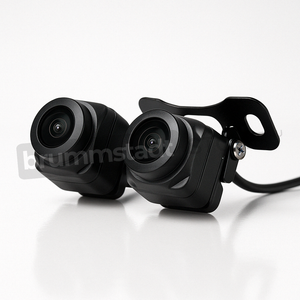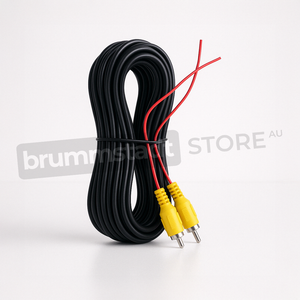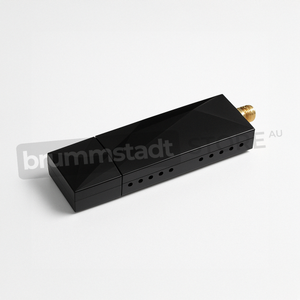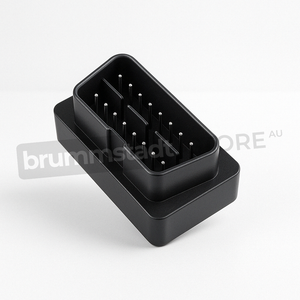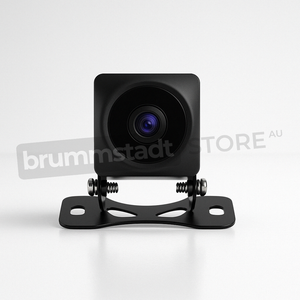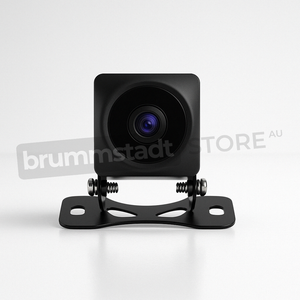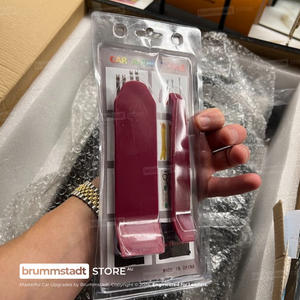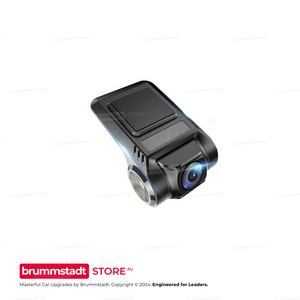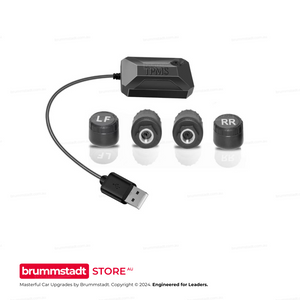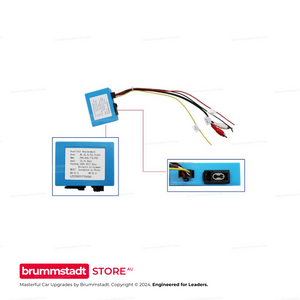Frequently Asked Questions
Everything you need to know about this head unit
Connect the single RCA cable with the yellow plug (included in your package) to extend your Bluetooth signal. This cable doubles as both a camera input AND a Bluetooth/WiFi antenna extension. The two small blue wires attached are antenna boosters that significantly improve connection stability. This simple connection takes 30 seconds and resolves 90% of Bluetooth issues. Make sure it's firmly connected even if you're not using a rear camera.
Try these proven solutions:
1. Quick Fix: Settings → Apps → Z-Link → Disable → Enable → Open (repeat each use)
2. Check Cables: Use the data/charge USB cable (not charge-only)
3. Bluetooth Setting: Disconnect all other Bluetooth connections - CarPlay needs exclusive access
4. Factory Reset Z-Link: Find the pink 'RESET' app, restart, reconnect Bluetooth, then try Z-Link
5. Sound Issues: Switch audio source to 'AUX' or 'USB/AUX' in your vehicle menu
Most issues are resolved with step 1 or 3!
The processor differs between models: The 2/32GB has a 4-Core processor, while 4/64GB and 8/128GB models feature the powerful 8-Core Cortex-A55 processor. Combined with RAM differences: The 2/32GB model with its 4-Core processor and limited RAM may experience slowdowns with heavy multitasking. The 4/64GB with 8-Core provides smooth performance for most users - no lag, seamless app switching, and enough storage for maps and music. The 8/128GB with 8-Core offers maximum performance with its generous RAM allowing unlimited multitasking and massive storage for extensive media libraries. Think of RAM like your desk space - more RAM means you can have more apps open simultaneously without slowing down.
Absolutely normal! These head units are complete replacement systems with their own GPS antenna, microphone, and Bluetooth module. Your factory connectors for these features won't be needed anymore. The important connections are: main power harness, speaker outputs, and the yellow RCA cable (even if not using a camera - it extends Bluetooth range). Any leftover factory plugs can be safely tucked away. If you're unsure about any connection, our support team is here 7 days a week.
Z-Link updates are handled through system firmware updates. Go to Settings → System → System Update. If an update is available, download it to a USB drive (FAT32 format) and install. Important: Never download Z-Link APKs from unofficial sources - they won't work and may cause issues. If you're having compatibility issues with newer iOS versions, the disable/enable workaround (Settings → Apps → Z-Link) usually resolves them while waiting for official updates.
Consider your usage:
• 2/32GB (4-Core): Budget option - fine for basic use, but may lag with multiple apps due to 4-Core processor and limited RAM
• 4/64GB (8-Core): Sweet spot - smooth Android Auto/CarPlay, multitasking, and ample storage
• 8/128GB (8-Core): Premium choice - unlimited multitasking, massive storage, future-proof for years
Most customers choose 4/64GB for the perfect balance of performance and value. The extra RAM makes a huge difference in daily smoothness!
The yellow RCA cable's blue antenna wires also boost WiFi signal! Make sure this cable is connected. Additionally, try these tips: Position the blue antenna wires away from metal surfaces, check that your phone's hotspot is set to 2.4GHz (not 5GHz) for better range, and ensure the head unit's WiFi sleep policy is set to 'Never' in Settings → WiFi → Advanced. For best performance with wireless CarPlay, keep your phone within 1-2 meters of the head unit.
Go to Settings → Sound → Equalizer and adjust to your preference. For more volume, increase the 'Loudness' setting. The 4/64GB and 8/128GB models have superior audio chips that provide cleaner, louder sound. If you have an amplifier, use the RCA outputs for best quality. Also check Settings → Factory Settings (password usually 126) → Audio settings for additional gain controls. Remember: higher-spec models (4GB+) include premium audio components for noticeably better sound.
Yes! Most vehicles work instantly. If not, use the steering wheel learning app: tap the steering wheel icon, press each button on your wheel, and assign functions. For newer vehicles with CANbus, we provide CANbus modules for automatic setup. Some vehicles may need the Key1/Key2 wires connected (usually included in our harness). If you're having trouble, let us know your exact vehicle model and we'll provide specific instructions.
We offer a 30-day return policy. If it doesn't fit or there's a compatibility issue, we'll work with you to resolve it. If you change your mind, a 20% restocking fee applies. Our team verifies compatibility before shipping to minimize issues. We provide installation support 7 days a week to help resolve any problems. With our 3-year warranty and Australian-based support, you can purchase with confidence. Full details in our Refund Policy.
Historical Evolution of Toyota Hilux:
First Generation (N10: 1968-1972):
Debuting internationally in 1968, the earliest Hilux models presented themselves as compact pick-ups capable of blending an everyday ease of use with practical trucking utility. Built compact yet strongly positioned in the burgeoning global demand for economical yet resilient trucks, the N10 Hilux easily found favor internationally, demonstrating marked reliability and usability, especially in regions needing robust affordability.
Second Generation (N20: 1972-1978):
Entering the early-1970s, the Hilux grew slightly larger and upgraded its range of engines and payload capacities. Enhanced cabin accommodation, improved fuel efficiency, and increased comfort transitioned the Hilux from its simple work roots towards broad lifestyle appeal. Drivers around the world began embracing these models as dependable companions in both commerce and leisure.
Third Generation (N30, N40: 1978-1983):
The late-1970s and early-1980s further refined Hilux’s stature. An expanding line-up included diesel engine options, four-wheel drive capabilities, and greater cabin comfort, significantly bolstering Hilux’s rugged credibility. Emerging popularity skyrocketed, particularly among off-road adventurers who admired its powerful engines, economy, and durability across challenging terrains.
Fourth Generation (N50, N60, N70: 1983-1988):
This phase ushered in yet greater sophistication, versatility, and strength. Engines were noticeably strengthened, payload and towing capacity significantly boosted, and robust four-wheel-drive options matured further. Hilux quickly established a global reputation for steadfast reliability, especially in difficult work conditions and extensive off-road adventures.
Fifth Generation (N80, N90, N100, N110: 1988-1997):
The 1990s saw Hilux expand into a global household name, popularized significantly by its portrayal as an “unbreakable” workhorse across the globe, especially notable in Australia, Africa, and Asia. Hilux challenged limitations and attracted widespread acclaim with strengthened engineering design, quality enhancements, and improved interior spaces and ergonomics.
Sixth Generation (N140, N150, N160, N170: 1997-2005):
Hilux’s sixth iteration further expanded its prowess—enhanced style elements emerged, improved safety features appeared, alongside significant engine upgrades that matched global emissions standards. This model became firmly cemented as a global symbol of resilience, an essential companion across harsh climates and challenging environments around the world.
Seventh Generation (AN10, AN20, AN30: 2004-2015):
These Hilux models set an unprecedented benchmark with remarkable global acceptance and esteem. From vast deserts to tropical jungles, commercial usage to recreational travels, the seventh-generation Hilux illustrated its exceptional balance of efficiency, comfort, strength, and durability. This era is often remembered as the pinnacle of Hilux’s global influence, largely attributable to impressive powertrain refinements, seamless off-road capability, excellent payload and towing credentials, and enhanced interior comforts.
Eighth Generation (AN120, AN130 – 2015-Present):
The current generation Toyota Hilux (2015-Present) maintains the proud tradition of reliability and durability, coupled now with a significantly improved visual design, modern comfort amenities, advanced technology, and safety upgrades. Exterior styling is more aggressive yet refined; engine options offer increased power and torque alongside superior fuel economy. Engineered meticulously for versatile performance, modern Hilux variations exhibit impressive interior refinement, intelligent driving aids including adaptive cruise control, lane departure warnings, and pre-collision safety systems, alongside pleasing comfort and noise isolation enhancements, well-suited for both urban usage and extended off-road expeditions.
Advanced Infotainment and Connectivity Integration:
Despite its success, many enthusiasts and daily drivers alike find the standard infotainment units in many Hilux models adequate, though somewhat limited. Highly thoughtful aftermarket solutions, such as a premium infotainment head unit upgrade offered by Brummstadt, align harmoniously with Toyota Hilux eighth-generation models (2015-2024)—integrating a thoroughly modern suite of convenience, entertainment, and connectivity provisions.
Brummstadt's plug-and-play head unit integrates neatly into the original Hilux dashboard, retaining existing aesthetics while delivering advanced technology and practical convenience. Notably, both wired and wireless compatibility with Apple CarPlay and Android Auto simplifies smartphone integration. Connecting with favorite navigation platforms—including Apple Maps, Google Maps, and Waze—brings practical clarity and safe journey planning. Imagine concluding an evening dining experience, casually setting a homebound destination into a smartphone. The route transfers seamlessly onto the head unit’s screen through wireless CarPlay or Android Auto, presenting the driver instant navigational clarity—regular commutes, unfamiliar terrain, or spontaneous visits become intuitive and enjoyable experiences.
Further enriching automotive life, Brummstadt’s head unit supports an optional 1080p HD camera system (front and rear)—offering heightened driving visibility complete with video recording capabilities. This feature provides added reassurance during challenging maneuvers and valuable eyewitness footage during unforeseen situations. Long journeys become more rewarding too: integrated USB connectivity readily permits joystick controllers, instantly converting the Hilux cabin into a mobile arcade for passengers to enjoy gaming interactions—transforming transit time into memorable shared pleasure. Intelligent voice control capabilities enhance daily convenience further—offering intuitive hands-free operation of media selection, navigation input, and phone management. For those integrating smart home ecosystems, voice-integration functionalities extend into home appliances and electronics remotely—such as instructing lights to switch on as a Hilux approaches home, crafting genuine convenience at journey’s end.
Hilux Advantages and Overall Driving Experience:
Each Hilux incarnation displays clear advancements in strength, durability, comfort, and technological refinement. The latest Hilux continues the legendary reliability and strength while incorporating thoughtfully implemented modern advancements. The potent engines deliver considerable low-end torque, consistent towing power, and economical efficiency. Sophisticated suspension designs ensure ride refinement and balance, reliably negotiating uneven off-road trails or urban highways equally adeptly. Interior comfort has evolved significantly across recent iterations—dedicated engineering reduces cabin noise prominently, and improved materials, layout, and ergonomics invite driver enjoyment across extended trips.
Combining this vehicle’s remarkable global legacy with carefully chosen aftermarket enhancements significantly amplifies its practicality, convenience, and enjoyment. Infotainment upgrades such as the Brummstadt head unit match contemporary connectivity expectations, routinely streamlining navigation, entertainment, safety, and limitless personalization opportunities. Whether used daily in urban commuting, industrial work environments, or global exploratory adventures, Toyota Hilux models convey genuine automotive satisfaction, confident durability, and timeless appeal—a fitting testament to enduring automotive achievement.

















